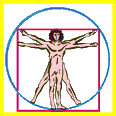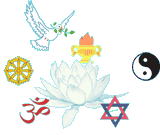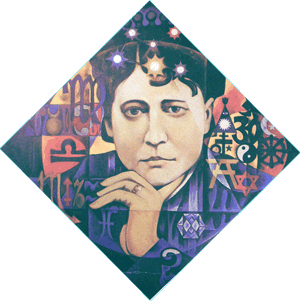 |
 |
 |
 |
 |
|

|
 |

T H E O S O P H Y
Nagual's aphorism

The philosophical school named Theosophy was created by the Himalayan Mahatmas and Their disciples with the purpose to unify isolated particles of the Truth and to reconcile two formations are being in opposition - academic science and religion...
Looking even superficialy at the history of the Earth, it is the obvious fact, that the peoples reached tops of their civilizations, when the culture was in the greatest development. When there were the institutes promoting masses' education; when aesthetics was in the centre of attention; when art was an integral part of daily life and was not only a moral satisfaction, but, first of all, the way of researching of the world.
During the whole historical period to different peoples Teachers were sent. They were reformers and founders of religions, leaders of peoples, scientists, art workers and legendary persons. They directed the planetary consciousness and were a source of new ideas of evolution. Some time after Teachers' leaving, the followers ceasing to understand the sense of the Teachings and, having lost clues to decoding, promoted degeneration of this knowledge in various religious cults, which only cared of the external form of the Doctrine.
Therefore making the comparative analysis of different philosophies and ancient Teachings we come to the conclusion that the Religion of Wisdom was unique in the Past. It’s proved enough by identity of doctrines passed by Initiates during the Mysteries.
In order to keep the Cosmic Knowledge in all purity, Priests and Adepts of the Secret Doctrine created various myths, legends and cults in order to keep this knowledge. By means of their allegory, servants of the Ancient Science, whenever possible, gave out some information in the language of signs and symbols.
Every ancient religious or rather philosophical cult consisted of esoteric that is secret teaching and exoteric (for profanes) liturgy. Moreover, it is well-known fact that mysteries of each nation included “Great” (secret) and “little” (public) mysteries; the famous Eleusinian ones for example. From Hierophants of Samothrace, Egypt and initiated Brahmins of ancient India to last Hebrew Rabbis, everyone, bewaring of profanation, kept their true inward Believing secret. Hebrew Rabbis called their public religious teaching Merkabah (a body) -”the conductor” or outward form containing the hidden soul – their highest knowledge.
All ancient nations never propagated true philosophic doctrines through priest, but the outward form. Northern Buddhism has two Schools – Mahayana (the great vehicle) and Hinayana (the small vehicle). And we cannot blame Buddhist teachers for that, because no one feeds one’s flock with dissertations on botany instead juicy grass. Pythagoras called his Gnosis “knowing things as they are” and kept this Knowledge for only his best disciples who could adopt such mental pabulum and hold It sacredly.
Occult alphabets and secret fonts are derivative of ancient Egyptian hieratic scripts. In ancient times Hierogrammatists or High Priests only had their secrets. Ammonius Saccas, as his biographers said, made his disciples swear not to disclose the Highest Doctrines. At last, we can find the same in earlier Christianity, at Gnostics, and even in Christ’s Teaching. Didn’t He speak to people in parables? “And he said unto them, unto you it is given to know the mystery of the kingdom of God: but unto them that are without, all these [things] are done in parables” (Mark 4:11, KJV). Essences of Judea similarly discriminated followers between neophytes and Initiates.
The reasons for that are:
- Firstly, it is depravity of common man’s nature, one’s egoism always striving for personal satisfaction to the prejudice of others. Such ones can never be trusted with divine secrets.
- Secondly, it is inability of philistines to keep the divinity knowledge from profanation. Exactly, the latter caused perversion of the very exalted truths and symbols, and gradual transition of spiritual matter into anthropomorphous, concrete and vulgar imagery, that is idolatry.
So with the purpose to unify isolated particles of Truth and to reconcile two formations are being in opposition - academic science and religion, the philosophical school named Theosophy was created by the Himalayan Mahatmas and Their disciples.
Wisdom-religion, or “Divine Wisdom”. The substratum and basis of all the world-religions and philosophies, taught and practised by a few elect ever since man became a thinking being. In its practical bearing, Theosophy is purely divine ethics; the definitions in dictionaries are pure nonsense, based on religious prejudice and ignorance of the true spirit of the early Rosicrucians and medieval philosophers who called themselves Theosophists.
A name by which many mystics at various periods of history have called themselves. The Neo-Platonists of Alexandria were Theosophists; the Alchemists and Kabbalists during the medieval ages were likewise so called, also the Martinists, the Quietists, and other kinds of mystics, whether acting independently or incorporated in a brotherhood or society. All real lovers of divine Wisdom and Truth had, and have, a right to the name, rather than those who, appropriating the qualification, live lives or perform actions opposed to the principles of Theosophy.
As described by Brother Kenneth R. Mackenzie, the Theosophists of the past centuries — “entirely speculative, and founding no schools, have still exercised a silent influence upon philosophy; and, no doubt, when the time arrives, many ideas thus silently propounded may yet give new directions to human thought. One of the ways in which these doctrines have obtained not only authority, but power, has been among certain enthusiasts in the higher degrees of Masonry. This power has, however, to a great degree died with the founders, and modern Freemasonry contains few traces of theosophic influence. However accurate and beautiful some of the ideas of Swedenborg, Pernetty, Paschalis, Saint Martin, Marconis, Ragon, and Chastanier may have been, they have but little direct influence on society.” This is true of the Theosophists of the last three centuries, but not of the later ones. For the Theosophists of the current century have already visibly impressed themselves on modern literature, and introduced the desire and craving for some philosophy in place of the blind dogmatic faith of yore, among the most intelligent portions of human-kind. Such is the difference between past and modern THEOSOPHY.
Theosophical Society, or “Universal Brotherhood” was founded in 1875 at New York, by Colonel H. S. Olcott and H. P. Blavatsky, helped by W. Q. Judge and several others. Its avowed object was at first the scientific investigation of psychic or so-called “spiritualistic” phenomena, after which its three chief objects were declared, namely (1) Brotherhood of man, without distinction of race, colour, religion, or social position; (2) the serious study of the ancient world-religions for purposes of comparison and the selection therefrom of universal ethics; (3) the study and development of the latent divine powers in man. At the present moment it has over 250 Branches scattered all over the world, most of which are in India, where also its chief Headquarters are established. It is composed of several large Sections — the Indian, the American, the Australian, and the European Sections.
This school has united ancient and modern philosophical doctrines, specifying on their Uniform Source. As the people at all times, studying one Earth and learnt the same laws, that the Truth does not change, but only appears in different points of view. And this Secret Doctrine was given by the founders of The Theosophical Society guided by the Great Teachers. The problems, that the Theosophy puts studying are laws of a nature, society, Microcosm and Macrocosm. The Theosophy is a path not of physical disciplines, a meditation, or an asceticism - but of the practice in daily life. It helps the discerning student to discover moral and spiritual guide-posts by which to learn to govern his or her life and thus contribute to the Common Good.
P.S. Dear reader, your questions and commentaries can be sent to our e-mail: alatasa@mail.ru - We will certainly look through them and try to reply you.

 |
 |
 |
 |
 |
|

|
 |
send a message alatasa@mail.ru
2008